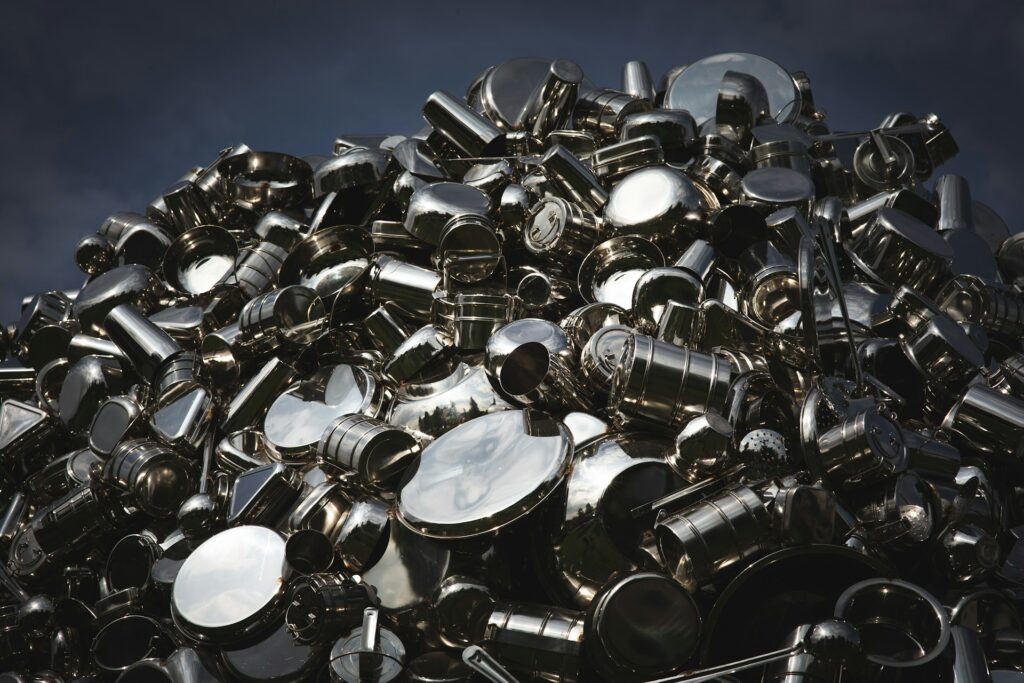
Introduction to Metal Recycling
Metal recycling is a cornerstone of contemporary waste management and vital to global sustainability efforts. As we stand at the crossroads of increased industrialization and ecological consciousness, the need for effective recycling strategies becomes more pronounced. At the heart of this is the transformation of scrap metal into reusable materials. The versatility of metals, highlighted by their myriad applications, prompts the pivotal question, ‘What can metal be used for?’ It reflects a broad spectrum of possibilities, including the production of construction materials, automotive parts, and household items, illustrating the continual demand for metal in various sectors. The significance of metal recycling goes beyond just economic incentives. It represents a shift towards sustainable living, where communities and industries worldwide adopt practices that minimize environmental footprints. Recycling decreases the demand for raw material extraction, conserving finite resources and energy. This universal initiative is crucial as it encapsulates ecological benefits and a commitment to future generations.
The Science Behind Metal Recycling
Understanding the science behind metal recycling reveals the fascinating interplay of physical and chemical principles. Metals are exceptional because of their intrinsic properties, such as conductivity, durability, and malleability, which allow them to be melted down and reshaped multiple times. This process involves sorting, shredding, and melting metals into raw forms, ready to be repurposed. Central to this is the metallurgical technology that supports these transformations, ensuring minimal loss of quality and material. In-depth knowledge of these metallurgical processes can enhance appreciation for the recycling industry’s achievements. Resources provide a nuanced look into the technicalities of recycling various metals, ranging from common ones like aluminum and steel to more specialized metals such as titanium.
Benefits of Metal Recycling
The array of benefits associated with metal recycling is extensive, touching environmental, economic, and social spheres. Environmentally, recycling is a potent tool for reducing greenhouse gas emissions. For example, generating new aluminum from recycled scrap uses 95% less energy than that needed for virgin ore. This significant energy conservation translates into fewer emissions, aiding worldwide initiatives to tackle climate change. Economically, the recycling sector supports numerous jobs and generates substantial revenue. Countries can bolster their economic resilience by reducing reliance on imported raw materials. Additionally, the cost savings from using recycled materials help keep prices lower for consumers, making it a win-win for all parties involved.
The Economics of Recycling Metals
Recycling metal is crucial for the economy, resulting in direct and indirect benefits. On one side, it generates job opportunities throughout different phases of the recycling cycle, ranging from collection and sorting to processing and production. On the other hand, recycling metals helps reduce the economic pressures associated with mining and raw material procurement, which are often cost-intensive and environmentally damaging. The financial advantages extend to industrial stakeholders who benefit from reduced operational costs of using recycled materials. For instance, manufacturing with recycled metals can often be more cost-effective than starting from scratch with raw ores. The recycling sector is an economic powerhouse, illustrating the substantial market data supporting recycling’s profitability and sustainability.
Innovative Technologies in Metal Recycling
The advent of innovative technologies in metal recycling is transforming the industry by enhancing efficiency and reducing costs. Automated sorting systems, for instance, have revolutionized the separation process, enabling faster, more accurate sorting of different metal types. Advanced furnaces and melting technologies further contribute by efficiently processing metal scrap, reducing energy consumption, and emissions. These technological breakthroughs are critical as they facilitate recycling complex and alloyed metals, which have historically posed challenges. The introduction of robotics and AI in recycling pushes the boundaries of what is currently possible and inspires ongoing research and development to overcome existing limitations within the industry.
The Role of Consumers in Metal Recycling
Consumers are pivotal in closing the metal recycling loop, as their participation ensures that recyclable materials do not end up in landfills. Individuals can significantly influence recycling outcomes by understanding and engaging in proper sorting and disposal methods. Public education campaigns and awareness programs are essential in promoting a climate of accountability and sustainability among consumers. Furthermore, consumer demand for sustainable products encourages companies to adopt recycled materials, creating a positive feedback loop reinforcing green practices across industries. The change in consumer tendencies towards more environmentally friendly choices is a testament to the collective ability to foster significant change and advance a culture of sustainability.
Global Trends and Challenges
Metal recycling is a global enterprise that faces various trends and challenges shaped by regional policies, market dynamics, and technological advancements. While the demand for recycled metals is globally increasing due to industrialization and urbanization, challenges such as fluctuating commodity prices, regulatory barriers, and geopolitical tensions also exist.
The push towards a circular economy emphasizes the importance of recycling within a sustainable framework, advocating for the transition from a linear “take-make-dispose” model to a more sustainable method. This transition involves international cooperation and policy alignment to ensure efficient, equitable, and economically viable recycling processes across borders.
Future Prospects of Metal Recycling
The future of metal recycling is bright, promising continued innovation and heightened awareness of environmental stewardship. As the industry embraces emerging technologies and breaks into new markets, it fosters resilience and adaptability. Collaboration between industries, governments, and the public will be crucial to overcoming existing and future challenges, ensuring recycling remains a cornerstone of sustainable development. The increasing momentum in recycling practices reflects a collective commitment to preserving our current resources and enhancing the quality of life for future generations. With ongoing investments in technology, education, and infrastructure, metal recycling will continue to be a vital component of global sustainability strategies.






